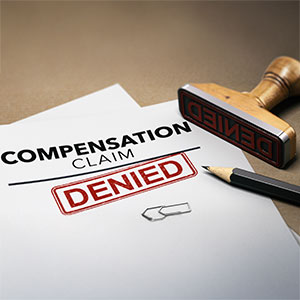Joint and Several Liability Not Substantive Right In Florida
Personal InjuryIn the case of Brown & Brown, Inc. v. James T. Gelsomino and Ace American Insurance Company, Case Number 4D17-3737 (Fla. 4th DCA November 28, 2018), Florida’s Fourth DCA held that a right to have a case outcome determined by the joint and several liability scheme in existence at the time of the plaintiff’s injury is not a substantive right. Because legal liability is not a “vested substantive right,” the Legislature may change it before your case has been decided and you must live with the change in the law.
Outline of Facts
Gelsomino was injured in 2002, which was well before the abolition of joint and several liability in Florida in 2006. At the time of his injury, a plaintiff could collect 95% of their damages under the principle of “joint and several” liability, meaning that any degree of fault apportioned by the jury could result in the defendant with “deep pockets” having to pay up to 95% of the civil judgment.
How Liability For Torts Changed in 2006
Under such a “joint and several” liability scheme before 2006 in Florida, it was enough to get a verdict against the defendant with deep pockets because you could collect most of your judgment that way. The year 2006 rocked the world for plaintiffs in most cases because the abolition of joint and several liability meant that the jury had to hit the defendant with deep pockets for the bulk of the liability in order to be collectible. See section 768.81(3), Fla. Stat. (2006) below:
In cases to which this section applies, the court shall enter judgment against each party on the basis of such party’s percentage of fault and not on the basis of the doctrine of joint and several liability.
Insurance companies wanted this change because they felt that it lowered their overall risk to pay in tort lawsuits. While not a discussion for this blog article, there were unintended consequences of this change in the law.
Impact of the Abolition of Joint and Several Liability on Litigation
Now that we have an understanding of joint and several liability and how it was eliminated under Florida law, the outcome of this case becomes important. On the day that Mr. Gelsomino was injured, the law in the State of Florida allowed joint and several liability up to 95%. While we cannot say for sure whether the status of the law impacted any decisions that Mr. Gelsomino would have made (i.e. such as whether to buy insurance to cover certain injury related perils), it is clear that the abolition of joint and several liability changed behavior for those with deep pockets afterward.
An example of this would be that before the abolition of joint and several liability, a business would need to buy insurance to cover not only their own liabilities but also for anyone who they may be held to have acted jointly with in causing an injury to a third person. After joint and several liability was abolished, the risk of being held accountable for an injury caused in part by someone else (but who did not have deep pockets to collect from) was no longer a consideration. Therefore, at least in theory, the amount of insurance needed to adequately cover risks went down in 2006 and beyond in the State of Florida.
Back to the point, in 2002 when Gelsomino was injured, none of the litigants would have had any idea that the Florida Legislature would ever do away with joint and several liability. It was the law at that time and there would have been no reason to believe that it would (or should) change. This is further reinforced by the legal principle that substantive rights in existence should not be abridged retroactively, and is supposed to be guaranteed by Florida’s constitution.
Liability Schemes Are Not Vested According to the Fourth DCA
Gelsomino’s case didn’t go to trial until 2014. We don’t know why, but it’s fair to say that it takes awhile to get most civil cases to trial without an expedited litigation process (i.e. tenant evictions, etc.). Things got worse for Gelsomino because the Florida Legislature made another change in the law making the abolition of joint and several liability retroactive in 2011 specifically to overule the Florida Supreme Court’s opinion in D’Amario v. Ford Motor Co., 806 So. 2d 424 (Fla. 2001) for the purpose of “reforming” tort liability in “crashworthiness” product liability cases.
We cannot forget that the Legislature’s 2011 amendment was politically motivated to the detriment of claimants in product liability cases against vehicle manufacturers and clearly to the benefit of large financial donors to the parties of legislators who supported “tort reform.” This is precisely where tort reform hurts real people the most. Whether you believe this is right or wrong depends on your political leanings and whether you believe the courts are for people or are the playgrounds for the rich and powerful. That is a subject for another discussion as well.
Of course, Gelsomino’s lawyers litigated this case with the expectation that the law at time of his injury would apply as just about all reasonable lawyers would do. What changed throughout the course of the litigation was the law and the insurance company (named in the lawsuit) appears to have taken advantage of the opportunity to deny a claim (just as insurance companies do despite all of the advertisements that want you to believe that they are benevolent).
Likewise, as the case turned out, the Fourth DCA stated:
We find that a plaintiff’s expectation, at the time of accrual, to collect an undetermined amount of damages from a defendant under the theory of joint and several liability was not “an immediate, fixed right of present or future enjoyment,” and was therefore not a vested substantive right.
The Fourth DCA went on further to say that “[i]t is totally within the domain of the legislature to pass laws and exercise its discretion to makes laws prospective or retroactive as it sees fit.”
Changing The Rules Of The Game After The Game Is Over
Despite the Fourth DCA’s holding, this is changing the rules of the game after the game has already ended. This is a case opinion that should be appealed to the Florida Supreme Court. Should there ever come a time in the future when the public decides that society needs joint and several liability again, you can rest assured that the insurance industry will say this case is no longer applicable.
Why You Need Help With Your Personal Injury Case
This case is a prime example of why you will need help litigating your Florida personal injury lawsuit. A Florida personal injury attorney is needed to take on the insurance companies and the system itself that is often biased in favor of large financial contributors to the political system. To make government work by the people and for the people, you will need help from an attorney who is committed to being on your side. Contact us today for a free consultation to discuss your personal injury case with an attorney in Lakeland, Florida.


